- Home
- Lawrence Block
Writing the Novel Page 9
Writing the Novel Read online
Page 9
In Time to Murder and Create, for instance, I made use of a character named Spinner Jablon. He’s not onstage long; he’s a stool pigeon turned blackmailer who hires Scudder to hold an envelope for him, said envelope to be opened in the event of his death, which in turn happens early in the book.
I had this to say about Spinner:
They called him the Spinner because of a habit he had. He carried an old silver dollar as a good-luck charm, and he would haul it out of his pants pocket all the time, prop it up on a table top with his left forefinger, then cock his right middle finger and give the edge of the coin a flick. If he was talking to you, his eyes would stay on the spinning coin while he spoke, and he seemed to be directing his words as much to the dollar as to you.
This spin-a-silver-dollar bit was a handy character tag; it gave Spinner something memorable to do, made for an interesting bit of business to go on during Spinner’s conversation with Scudder, and later in the book provided a way for Scudder to underscore Spinner’s death—he purchases a silver dollar from a coin dealer and takes to carrying it around himself and spinning it on tabletops.
This isn’t characterization. It’s gimmickry, but sometimes for me it’s the first step in the process of characterization. It gives me a tag, a handle, and the actual character evolves in due course through a process that seems to be largely intuitive.
The sort of handle you get on a character varies with the kind of writer you are and the particular character you’re dealing with. I find I’m most likely to latch onto characters by the way they sound, the manner in which they use language. It’s often through their dialogue that they become real for me, and I frequently fasten onto this while having a less concrete notion of what they look like physically. Sometimes, though, I start with a particular visual picture of a character and all the rest follows.
I still remember a line that popped into my head a few years ago after I caught a glimpse of a woman in a Los Angeles restaurant. “She had the pinched face of someone who’d grown up on a hardscrabble hillside farm and would do anything to keep from going back.”
I didn’t write down those imperishable words but they stayed in my mind, along with not only an image of the woman I’d seen but a whole set of attitudes. I knew who the woman was and how she would sound and what her reactions would be to various phenomena. I didn’t know what use I might one day make of her, whether she’d be a heroine or a villain, a protagonist or a spear carrier. So far the only use I’ve gotten out of her is here and now, to illustrate where characters come from and how they evolve, and it’s possible that’s all the use I’ll ever get out of her.
If you keep a notebook, character sketches are a logical item to include. Maugham’s Writer’s Notebook makes fascinating reading because of the character sketches it contains, many of which ultimately found their way into his short stories and novels. You can jot down whatever you want—your actual observations of a real person, some bits and pieces of gimmickry you’ve thought up or observed and might eventually want to use for a character of your own creation, or any sort of tag or impression that might blossom into a full-blown character.
Which comes first, the plot or the character?
There’s no answer for that one. A book may start with either the plot or the characters more fully grasped, but both aspects generally take shape side by side as the book itself is formed. Even in books where I think I know pretty much what’s going to happen before I start writing, unplanned incidents crop up in the plotting and invariably call for the creation of new minor characters on the spot. My lead, say, goes looking for someone at a hotel. His quarry’s out, but a conversation ensues with the hotel clerk, either to develop certain information or just because such a conversation would be part of the natural order of things. I can make that clerk as much or as little an individual as I want. He can be tall or short, young or old, fat or thin. He can have something or nothing much to say.
Is he doing something when my lead approaches him? Looking at a girlie magazine? Filling in a crossword puzzle in ink? Dozing? Sucking on a bottle of bourbon?
These are all decisions you make as a writer. You may make them quickly and spontaneously and intuitively. You may elect to tell a lot or a little about this sort of bit player. The success of your novel will not stand or fall upon the way you handle him, as it well may hinge on your treatment of major characters, but all characterization plays an important part in the overall impact of your fiction.
Chapter 6
Outlining
An outline is a tool which a writer uses to simplify the task of writing a novel and to improve the ultimate quality of that novel by giving himself more of a grasp on its overall structure.
And that’s about as specifically as one can define an outline, beyond adding that it’s almost invariably shorter than the book will turn out to be. What length it will run, what form it will take, how detailed it will be, and what sort of novel components it will or will not include, is and ought to be a wholly individual matter. Because the outline is prepared solely for the benefit of the writer himself, it quite properly varies from one author to another and from one novel to another. Some writers never use an outline. Others would be uncomfortable writing anything more ambitious than a shopping list without outlining it first. Some outlines, deemed very useful by their authors, run a scant page. Others, considered equally indispensable by their authors, run a hundred pages or more and include a detailed description of every scene that is going to take place in every chapter of the book. Neither of these extremes, nor any of the infinite gradations between the two poles, represents the right way to prepare an outline. There is no right way to do this—or, more correctly, there is no wrong way. Whatever works best for the particular writer on the particular book is demonstrably the right way.
I’ve written quite a few novels without employing any outline whatsoever. The advantage of eschewing outlines is quite simple. With no predetermined course, the novel is free to evolve as it goes along, with the plot growing naturally out of what has been written rather than being bound artificially to the skeletal structure of an outline like a rosebush espaliered to a trellis.
The writer who does not use an outline says that to do so would gut the book of its spontaneity and would make the writing process itself a matter of filling in the blanks of a printed form. At the root of this school of thought is the argument first propounded, I believe, by science-fiction author Theodore Sturgeon. If the writer doesn’t know what’s going to happen next, he argued, the reader can’t possibly know what’s going to happen next.
There’s logic in that argument, certainly, but I’m not sure it holds up. Just because a writer worked things out as he went along is no guarantee that the book he’s produced won’t be obvious and predictable. Conversely, the use of an extremely detailed outline does not preclude the possibility that the book will read as though it had been written effortlessly and spontaneously by a wholly freewheeling author.
Some time ago I queried a hundred or so authors on their writing methods. A considerable number explained that they didn’t outline at all, or prepared minimal outlines at most. Here’s Willo Davis Roberts echoing Sturgeon’s Principle:
I seldom outline, except insofar as I have to come up with enough to interest an editor if I want a contract before I do the book. Often I do not know how a suspense novel will turn out until I get to the last chapter, which is more fun than having the end all planned beforehand.
Tony Hillerman takes the same position, not because it’s more fun necessarily but because it’s what comes naturally for him:
I have never been able to outline a book. I work from a basic general idea, a couple of clearly understood characters, a couple of thematic and plot ideas, and a rough conception of where I’m going with it all. I also work with a clear idea of place. I tend to write in scenes—getting one vividly in mind, then putting it quickly on paper.
In marked contrast, consider this from Richard S. Prather, auth
or of forty suspense novels, most of them lighthearted frothy chronicles of the doings of private eye Shell Scott:
I spend considerable time on plot development, typing roughly 100,000 or more words of scene fragments, gimmicks, “what if?” possibilities, alternative actions or solutions, until the overall story line satisfies me. I boil all of this down to a couple of pages, then from these prepare a detailed chapter-by-chapter synopsis, using a separate page (or more) for each of, say, twenty chapters, and expanding in those pages upon characters, motivations, scenes, action, whenever such expansion seems a natural development. When the synopsis is done, I start the first draft of the book and bang away as speedily as possible until the end.
If I ever tried the method Prather describes, I’m sure what I produced would have all the freshness and appeal of week-old mashed potatoes; it would certainly not possess the sparkle of his Shell Scott books—which only serves to underscore the highly individual nature of outlines in particular and writing methods in general. If writing with an outline is for some people like filling in a printed form, writing without an outline is for others like playing tennis without a net—as Robert Frost said of free verse. In some instances, it’s even more like walking a tightrope without a net.
It’s all up to you. If you feel comfortable beginning your book without an outline—or even without all that firm an idea where it’s going—by all means go ahead. If you’ll feel more confident of your ability to finish the book with an outline in front of you, by all means construct and employ one. As you go along, you’ll learn what works best for the particular writer you turn out to be.
And that’s all that matters. No one ever bought a book because it was written with an outline, or because it wasn’t.
I want to use an outline. Now what?
The first step is to find out what an outline is. And the easiest way to do that is to write one. Not of your book but of somebody else’s.
In an earlier chapter, we discussed this method of preparing an outline of someone else’s book as a means of understanding how novels work. The process is similarly valuable as an aid to learning what an outline is.
Some years back I decided in a weak moment that I wanted to write movies. I was bright enough to recognize that film is an infinitely different medium from prose, and reasoned that I had to familiarize myself with it before I could expect to produce anything that would fly. First thing I did was start going to movies day after day.
This was fun, and it wasn’t all that bad an idea, but it didn’t teach me a hell of a lot about screenwriting. I came to realize somewhere along the way that I was taking the wrong approach. I wouldn’t be writing movies, after all. I would be writing screenplays. So, instead of studying the films themselves, I ought to be reading their scripts.
If it sounds like a small distinction, I suggest you give it some thought. What I wanted to write was a script, and in order to do that I had to learn what a script was, how it worked not on the screen but on the page. I had to be able to see a film as words on paper, not images on a screen, because I would be writing that script by putting words on paper.
So I read scripts, quite a few of them, and what a difference it made! In the first place, I began to understand what scripts were, how they were written, and how I could write one of my own. In the second place and at least as important, my reading of film scripts made a significant change in my perception when I looked at a film in a theater. My perspective was changed, and I’d look at the movie and mentally translate it back into the script it had come from.
This didn’t make me a screenwriter. I did write a movie script, and a treatment for another movie, and in the course of doing this I learned that I wasn’t really cut out to be a screenwriter and didn’t really want to be one, for any of a variety of perfectly sound reasons. But I still watch films with a heightened awareness of the underlying screenplay, and I wouldn’t be surprised if this has paid some dividends in my prose writing.
In the same fashion, the best preparation for writing an outline is reading outlines, not reading novels. By studying the outlines themselves you will see how an outline looks on a typed page; as important, you will develop the ability to see other novels—and, ultimately, your own novel—with x-ray eyes; i.e., you’ll see through the prose and dialogue to the bare bones beneath.
How do you outline another person’s novel? Whatever way you wish. Your outline of somebody else’s book can be as sketchy or as detailed as you like, just as the outline you eventually work up for your own novel may be sketchy or detailed, brief or lengthy. Do whatever seems most natural to you.
Once you’ve familiarized yourself with outlines of other writers’ novels—or once you’ve decided not to bother with that step—it’s time to get to work on your own outline. At this point some warm-up exercises and wind sprints can be useful. Few of us would care to do as much pre-outline work as Richard S. Prather describes, with preparatory writing running to almost double the length of the finished book, but one can do as much as seems useful.
Character sketches are handy, for example. In the preceding chapter I mentioned how the evolution of my Matthew Scudder character was facilitated by the memo I wrote to myself, in which I discussed Scudder at some length, talking about his background, his habits, his current way of life, his likes and dislikes, and how he likes his eggs for breakfast. In his journals, Chekhov suggests that a writer ought to know everything he can about a character—his shoe size, the condition of his liver, lungs, clothes, habits, and intestinal track. You may not mention the greater portion of this in your writing, but the better you know your characters the more effectively you’ll be able to write about them. I always keep learning new things about my characters as I go along; I’m still learning about Scudder and Bernie Rhodenbarr, even after several books about each of them—but the better I know them in advance, the better equipped I am for outlining and, later, for writing the novel.
It’s also occasionally helpful to write an answer to the question “What is this book about?” In the early days of Hollywood, the conventional wisdom held that a story line ought to be capable of being conveyed in a single sentence. While I suspect this theory was originally propounded by illiterates who couldn’t hold more than one sentence in their heads at a time, and while it unquestionably overstates the case, there’s some merit to the argument. If nothing else, one feels more confident about approaching a book when one is able to say, if only to oneself, what the thing is about.
Burglars Can’t Be Choosers is about a cheeky professional burglar who steals an object to order, and the cops walk in on him and catch him in the act, and there’s a dead body in the apartment and he escapes and has to clear himself by solving the crime, which he does.
That’s what one novel is about, all in one sentence, cumbersome though that sentence be. Explaining what your book is to be about may take several sentences or paragraphs. It’s possible, certainly, to write a book without consciously knowing in advance what it’s to be about; sometimes we write the books in order to answer that very question. And it’s possible to know what the book’s about without spelling it out on paper. But sometimes getting it down improves one’s grasp on the whole thing.
The next step is to write the outline itself, in as much or as little detail as you wish. I have frequently found it useful to make this a chapter outline, with a paragraph given to describe the action that will take place in each chapter. If you take this approach, don’t be unduly concerned with just how you’ll divide your narrative into chapters. When you do the actual writing, you may very well discover that the breaks come naturally in different places than the outline indicated. You’ll simply ignore the division in the outline and do them whatever way seems best. This is just one way in which you’ll ultimately feel free to deviate from the outline, as we’ll see in due course. Writing the outline chapter by chapter, whether or not the book will correspond to this division, introduces a sense of order; I think that’s why I’ve found it valu
able.
How detailed should the outline be? Given the premise that this is an individual matter, infinitely variable from one author to another and from one book to the next, we might go on to say that there ought to be enough detail so that the story line makes sense. Outlining rarely amounts to more than putting on paper a plot that is already completely formed in your head. As you write things out, chapter by chapter, scene by scene, you’ll be working out the details of the story as you go. Problems that wouldn’t occur to you otherwise will present themselves.
You’ll work out the solutions to some of these problems in the course of completing the outline. But you won’t work out all of them this way, and it’s important to recognize that you don’t have to. Simply by spotting and defining a problem you have taken a step toward its solution. From then on, your unconscious mind (and your conscious mind as well, for that matter) will be able to play with the problem. While you write the early chapters, you’ll have the plot and structure problems of future chapters somewhere in the back of your mind. In other words, the outlining process is part of the whole organic evolution of the book. The book grows and takes shape during it, and the book will continue to grow and shape itself as a result of it.
It’s possible, I think, for an outline to be too detailed. And it’s also possible to waste time and words in an outline explaining motives and background excessively. One thing to remember, in this sort of outline, is that you’re writing this for your own benefit, not for anybody else to read. That being the case, you don’t have to explain and justify things to yourself when you already have a sufficient grasp of them. Writing is liveliest when it’s interesting to the person doing it. Purposeless elaboration in an outline is one way to kill your own interest in what you will later have to sit down and write.

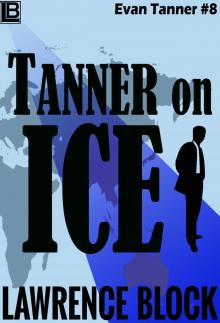 Tanner on Ice
Tanner on Ice Hit Me
Hit Me Hit and Run
Hit and Run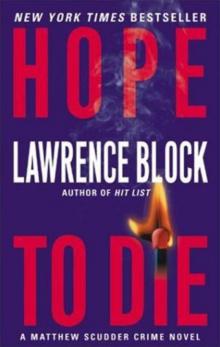 Hope to Die
Hope to Die Two For Tanner
Two For Tanner Tanners Virgin
Tanners Virgin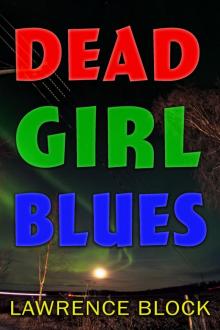 Dead Girl Blues
Dead Girl Blues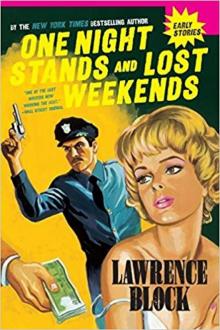 One Night Stands and Lost Weekends
One Night Stands and Lost Weekends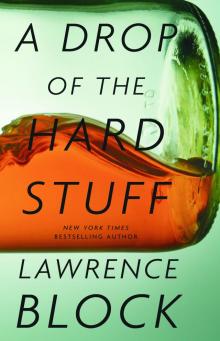 A Drop of the Hard Stuff
A Drop of the Hard Stuff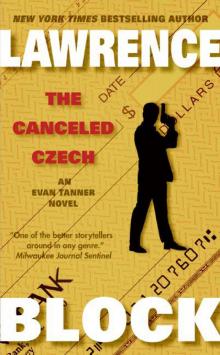 The Canceled Czech
The Canceled Czech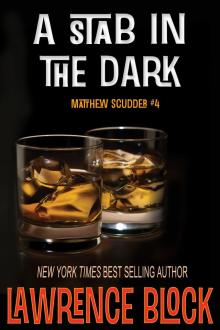 Even the Wicked
Even the Wicked Me Tanner, You Jane
Me Tanner, You Jane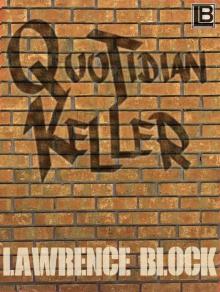 Quotidian Keller
Quotidian Keller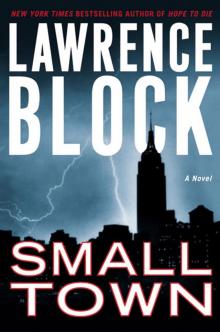 Small Town
Small Town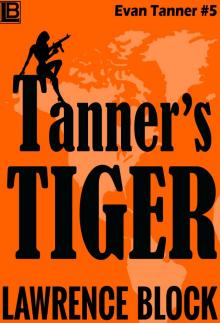 Tanners Tiger
Tanners Tiger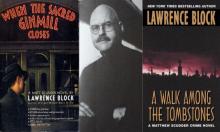 A Walk Among the Tombstones
A Walk Among the Tombstones Tanners Twelve Swingers
Tanners Twelve Swingers Gym Rat & the Murder Club
Gym Rat & the Murder Club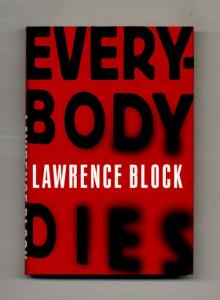 Everybody Dies
Everybody Dies The Thief Who Couldnt Sleep
The Thief Who Couldnt Sleep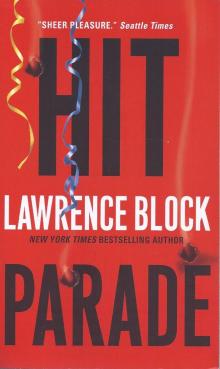 Hit Parade
Hit Parade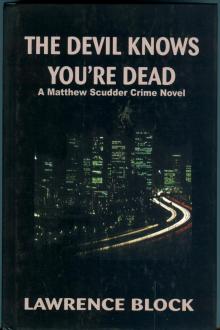 The Devil Knows Youre Dead
The Devil Knows Youre Dead The Burglar in Short Order
The Burglar in Short Order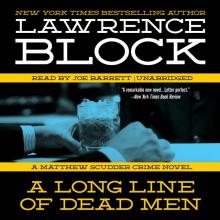 A Long Line of Dead Men
A Long Line of Dead Men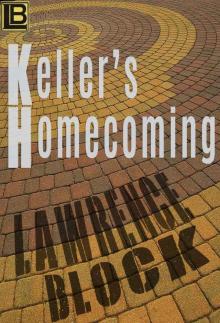 Keller's Homecoming
Keller's Homecoming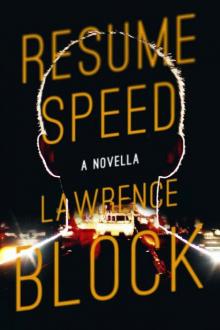 Resume Speed
Resume Speed Keller's Adjustment
Keller's Adjustment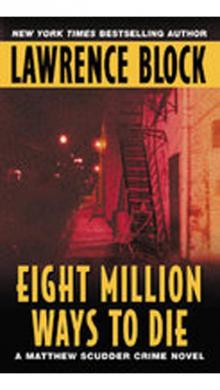 Eight Million Ways to Die
Eight Million Ways to Die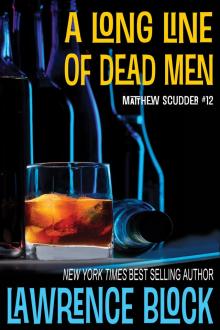 Time to Murder and Create
Time to Murder and Create Out on the Cutting Edge
Out on the Cutting Edge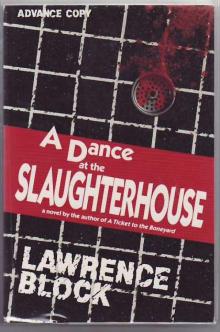 A Dance at the Slaughter House
A Dance at the Slaughter House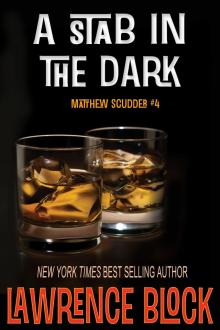 In the Midst of Death
In the Midst of Death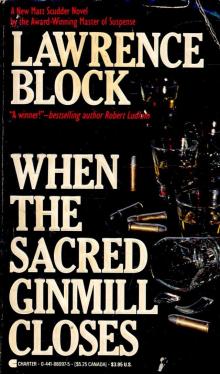 When the Sacred Ginmill Closes
When the Sacred Ginmill Closes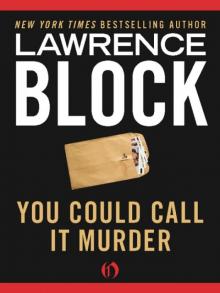 You Could Call It Murder
You Could Call It Murder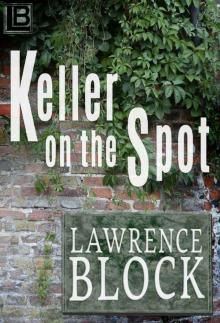 Keller on the Spot
Keller on the Spot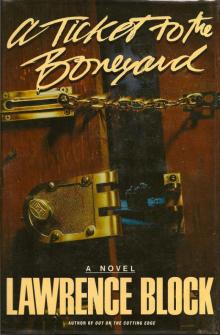 A Ticket to the Boneyard
A Ticket to the Boneyard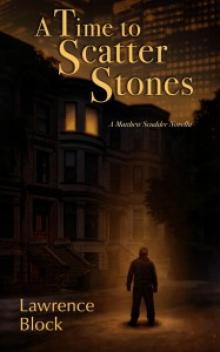 A Time to Scatter Stones
A Time to Scatter Stones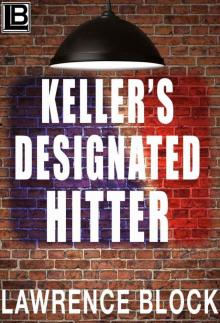 Keller's Designated Hitter
Keller's Designated Hitter A Stab in the Dark
A Stab in the Dark Sins of the Fathers
Sins of the Fathers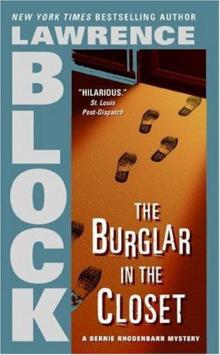 The Burglar in the Closet
The Burglar in the Closet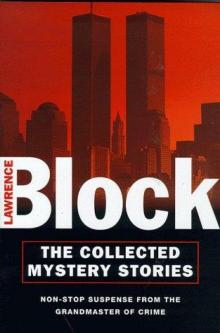 Burglar Who Dropped In On Elvis
Burglar Who Dropped In On Elvis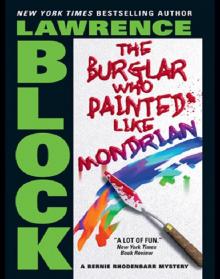 The Burglar Who Painted Like Mondrian
The Burglar Who Painted Like Mondrian The Girl With the Long Green Heart
The Girl With the Long Green Heart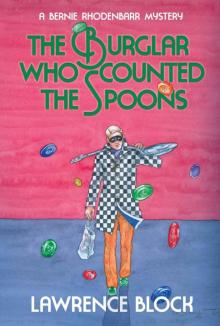 The Burglar Who Counted the Spoons (Bernie Rhodenbarr)
The Burglar Who Counted the Spoons (Bernie Rhodenbarr)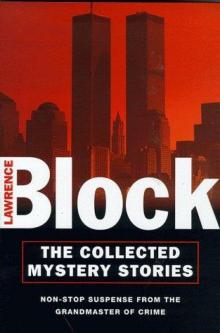 Burglar Who Smelled Smoke
Burglar Who Smelled Smoke Rude Awakening (Kit Tolliver #2) (The Kit Tolliver Stories)
Rude Awakening (Kit Tolliver #2) (The Kit Tolliver Stories) Don't Get in the Car (Kit Tolliver #9) (The Kit Tolliver Stories)
Don't Get in the Car (Kit Tolliver #9) (The Kit Tolliver Stories) CH04 - The Topless Tulip Caper
CH04 - The Topless Tulip Caper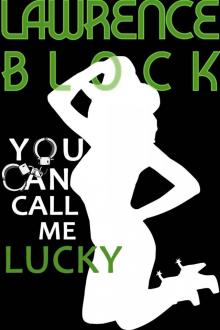 You Can Call Me Lucky (Kit Tolliver #3) (The Kit Tolliver Stories)
You Can Call Me Lucky (Kit Tolliver #3) (The Kit Tolliver Stories) CH02 - Chip Harrison Scores Again
CH02 - Chip Harrison Scores Again Strangers on a Handball Court
Strangers on a Handball Court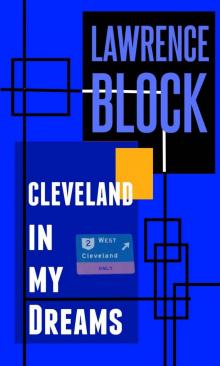 Cleveland in My Dreams
Cleveland in My Dreams Clean Slate (Kit Tolliver #4) (The Kit Tolliver Stories)
Clean Slate (Kit Tolliver #4) (The Kit Tolliver Stories)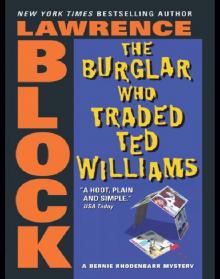 The Burglar Who Traded Ted Williams
The Burglar Who Traded Ted Williams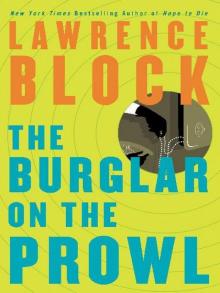 Burglar on the Prowl
Burglar on the Prowl In For a Penny (A Story From the Dark Side)
In For a Penny (A Story From the Dark Side)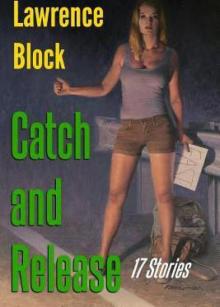 Catch and Release Paperback
Catch and Release Paperback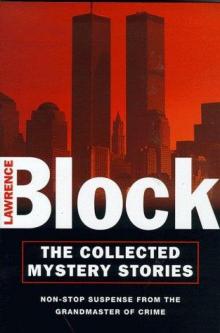 Ride A White Horse
Ride A White Horse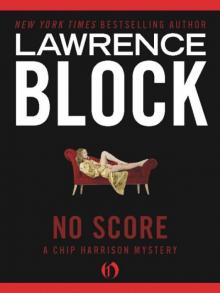 No Score
No Score Looking for David (A Matthew Scudder Story Book 7)
Looking for David (A Matthew Scudder Story Book 7)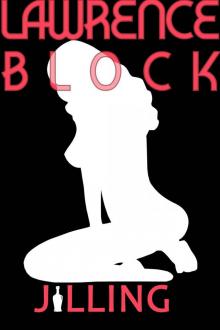 Jilling (Kit Tolliver #6) (The Kit Tolliver Stories)
Jilling (Kit Tolliver #6) (The Kit Tolliver Stories) Ariel
Ariel Enough Rope
Enough Rope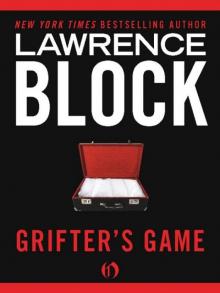 Grifter's Game
Grifter's Game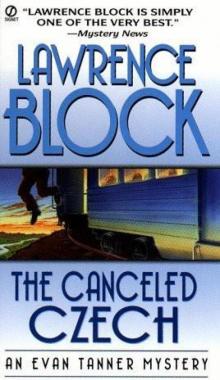 Canceled Czech
Canceled Czech Unfinished Business (Kit Tolliver #12) (The Kit Tolliver Stories)
Unfinished Business (Kit Tolliver #12) (The Kit Tolliver Stories)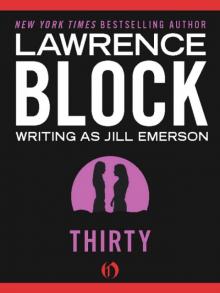 Thirty
Thirty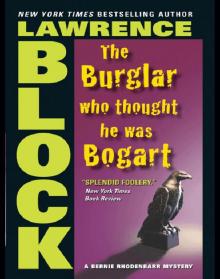 The Burglar Who Thought He Was Bogart
The Burglar Who Thought He Was Bogart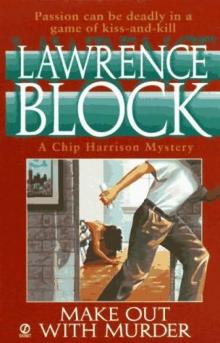 Make Out with Murder
Make Out with Murder One Last Night at Grogan's (A Matthew Scudder Story Book 11)
One Last Night at Grogan's (A Matthew Scudder Story Book 11) The Burglar on the Prowl
The Burglar on the Prowl Welcome to the Real World (A Story From the Dark Side)
Welcome to the Real World (A Story From the Dark Side)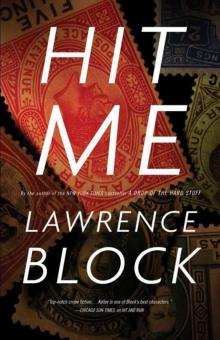 Keller 05 - Hit Me
Keller 05 - Hit Me Walk Among the Tombstones: A Matthew Scudder Crime Novel
Walk Among the Tombstones: A Matthew Scudder Crime Novel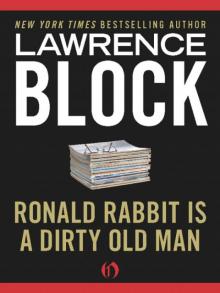 Ronald Rabbit Is a Dirty Old Man
Ronald Rabbit Is a Dirty Old Man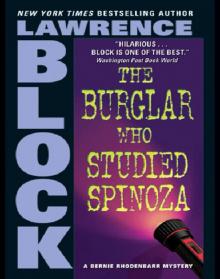 The Burglar Who Studied Spinoza
The Burglar Who Studied Spinoza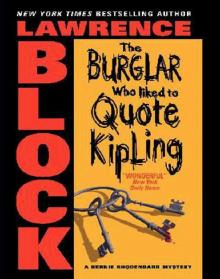 The Burglar Who Liked to Quote Kipling
The Burglar Who Liked to Quote Kipling Keller in Des Moines
Keller in Des Moines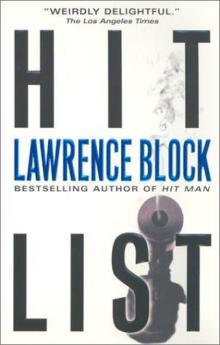 Hit List
Hit List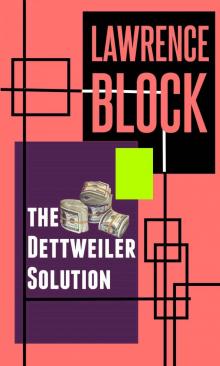 The Dettweiler Solution
The Dettweiler Solution HCC 115 - Borderline
HCC 115 - Borderline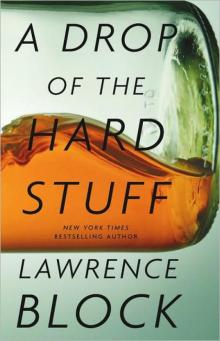 A Drop of the Hard Stuff: A Matthew Scudder Novel
A Drop of the Hard Stuff: A Matthew Scudder Novel Step by Step
Step by Step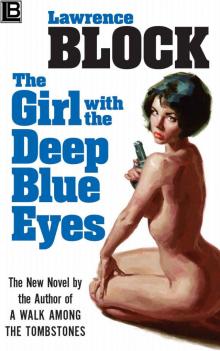 The Girl With the Deep Blue Eyes
The Girl With the Deep Blue Eyes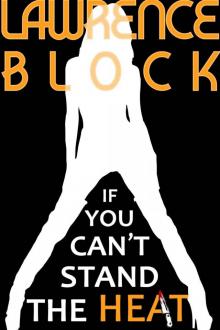 If You Can't Stand the Heat (Kit Tolliver #1) (The Kit Tolliver Stories)
If You Can't Stand the Heat (Kit Tolliver #1) (The Kit Tolliver Stories)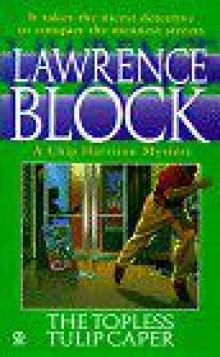 The Topless Tulip Caper
The Topless Tulip Caper Dolly's Trash & Treasures (A Story From the Dark Side)
Dolly's Trash & Treasures (A Story From the Dark Side) The Triumph of Evil
The Triumph of Evil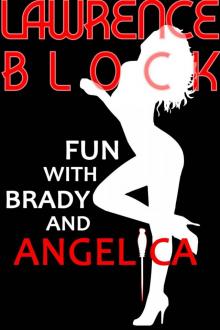 Fun with Brady and Angelica (Kit Tolliver #10 (The Kit Tolliver Stories)
Fun with Brady and Angelica (Kit Tolliver #10 (The Kit Tolliver Stories)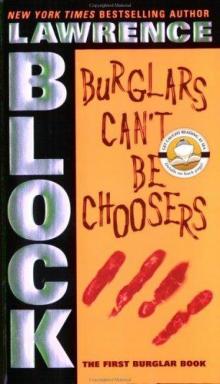 Burglars Can't Be Choosers
Burglars Can't Be Choosers Who Knows Where It Goes (A Story From the Dark Side)
Who Knows Where It Goes (A Story From the Dark Side) Deadly Honeymoon
Deadly Honeymoon Like a Bone in the Throat (A Story From the Dark Side)
Like a Bone in the Throat (A Story From the Dark Side)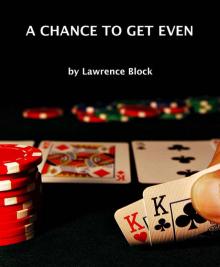 A Chance to Get Even (A Story From the Dark Side)
A Chance to Get Even (A Story From the Dark Side) The Boy Who Disappeared Clouds
The Boy Who Disappeared Clouds Collecting Ackermans
Collecting Ackermans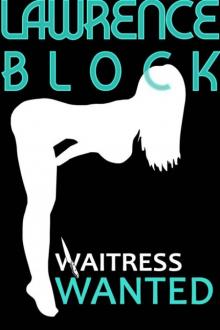 Waitress Wanted (Kit Tolliver #5) (The Kit Tolliver Stories)
Waitress Wanted (Kit Tolliver #5) (The Kit Tolliver Stories)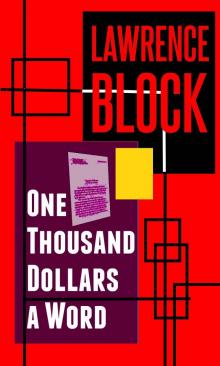 One Thousand Dollars a Word
One Thousand Dollars a Word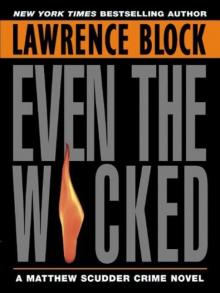 Even the Wicked: A Matthew Scudder Novel (Matthew Scudder Mysteries)
Even the Wicked: A Matthew Scudder Novel (Matthew Scudder Mysteries)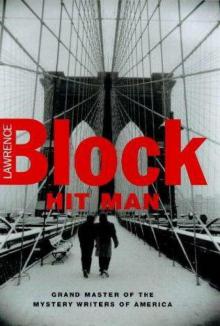 Hit Man
Hit Man The Night and The Music
The Night and The Music Ehrengraf for the Defense
Ehrengraf for the Defense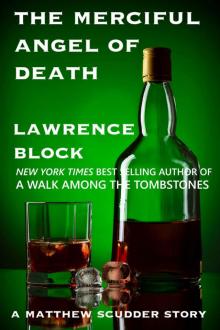 The Merciful Angel of Death (A Matthew Scudder Story Book 5)
The Merciful Angel of Death (A Matthew Scudder Story Book 5) The Burglar in the Rye
The Burglar in the Rye I Know How to Pick 'Em
I Know How to Pick 'Em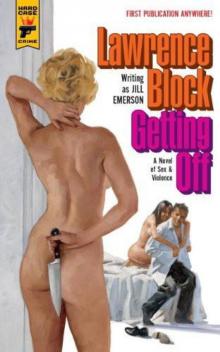 Getting Off hcc-69
Getting Off hcc-69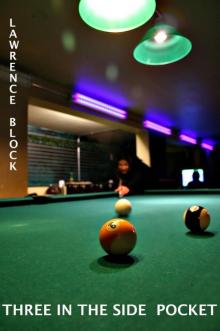 Three in the Side Pocket (A Story From the Dark Side)
Three in the Side Pocket (A Story From the Dark Side)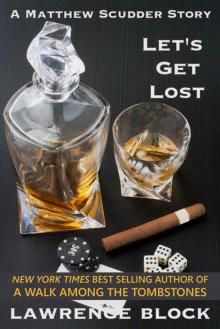 Let's Get Lost (A Matthew Scudder Story Book 8)
Let's Get Lost (A Matthew Scudder Story Book 8) Strange Are the Ways of Love
Strange Are the Ways of Love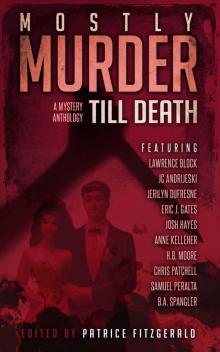 MOSTLY MURDER: Till Death: a mystery anthology
MOSTLY MURDER: Till Death: a mystery anthology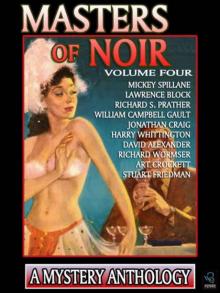 Masters of Noir: Volume Four
Masters of Noir: Volume Four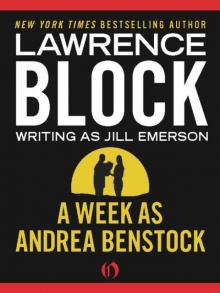 A Week as Andrea Benstock
A Week as Andrea Benstock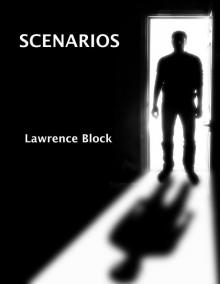 Scenarios (A Stoiry From the Dark Side)
Scenarios (A Stoiry From the Dark Side) The Sex Therapists: What They Can Do and How They Do It (John Warren Wells on Sexual Behavior Book 15)
The Sex Therapists: What They Can Do and How They Do It (John Warren Wells on Sexual Behavior Book 15) Like a Thief in the Night: a Bernie Rhodenbarr story
Like a Thief in the Night: a Bernie Rhodenbarr story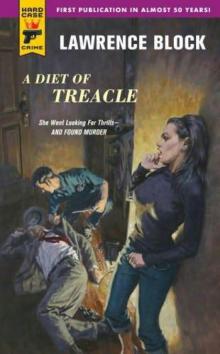 A Diet of Treacle
A Diet of Treacle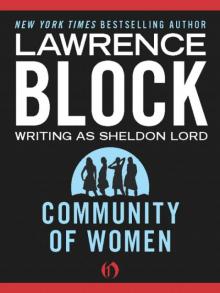 Community of Women
Community of Women Different Strokes: How I (Gulp!) Wrote, Directed, and Starred in an X-rated Movie (John Warren Wells on Sexual Behavior)
Different Strokes: How I (Gulp!) Wrote, Directed, and Starred in an X-rated Movie (John Warren Wells on Sexual Behavior) You Don't Even Feel It (A Story From the Dark Side)
You Don't Even Feel It (A Story From the Dark Side)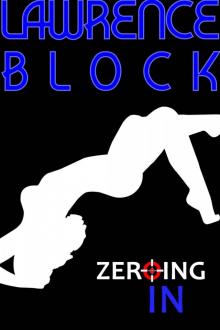 Zeroing In (Kit Tolliver #11) (The Kit Tolliver Stories)
Zeroing In (Kit Tolliver #11) (The Kit Tolliver Stories) The Wife-Swap Report (John Warren Wells on Sexual Behavior)
The Wife-Swap Report (John Warren Wells on Sexual Behavior)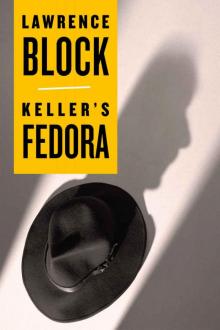 Keller's Fedora (Kindle Single)
Keller's Fedora (Kindle Single) Speaking of Lust
Speaking of Lust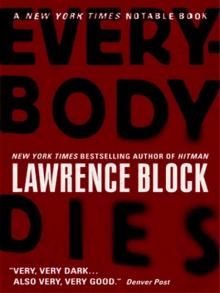 Everybody Dies (Matthew Scudder)
Everybody Dies (Matthew Scudder)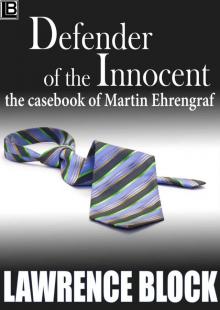 Defender of the Innocent: The Casebook of Martin Ehrengraf
Defender of the Innocent: The Casebook of Martin Ehrengraf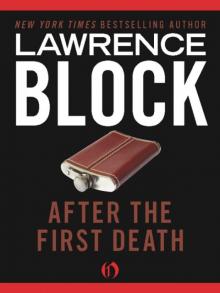 After the First Death
After the First Death Writing the Novel
Writing the Novel How Far - a one-act stage play
How Far - a one-act stage play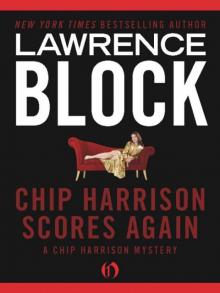 Chip Harrison Scores Again
Chip Harrison Scores Again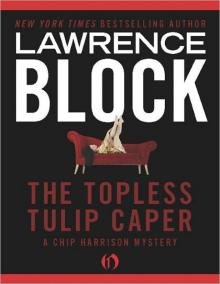 The Topless Tulip Caper ch-4
The Topless Tulip Caper ch-4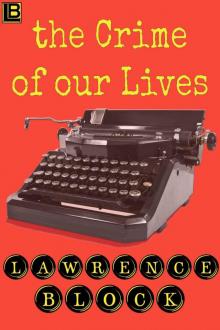 The Crime of Our Lives
The Crime of Our Lives Killing Castro
Killing Castro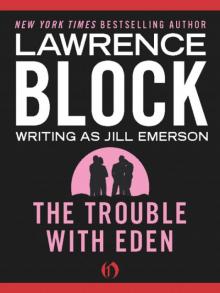 The Trouble with Eden
The Trouble with Eden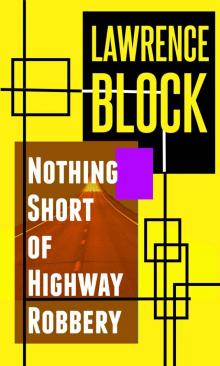 Nothing Short of Highway Robbery
Nothing Short of Highway Robbery Sin Hellcat
Sin Hellcat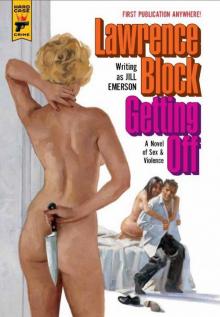 Getting Off: A Novel of Sex & Violence (Hard Case Crime)
Getting Off: A Novel of Sex & Violence (Hard Case Crime)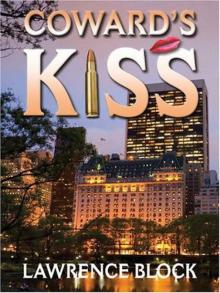 Coward's Kiss
Coward's Kiss Alive in Shape and Color
Alive in Shape and Color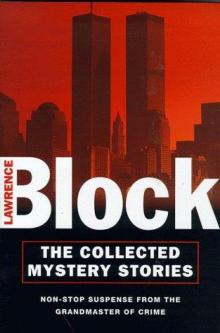 Blow for Freedom
Blow for Freedom The New Sexual Underground: Crossing the Last Boundaries (John Warren Wells on Sexual Behavior Book 10)
The New Sexual Underground: Crossing the Last Boundaries (John Warren Wells on Sexual Behavior Book 10)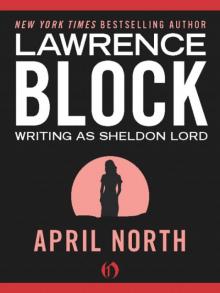 April North
April North Lucky at Cards
Lucky at Cards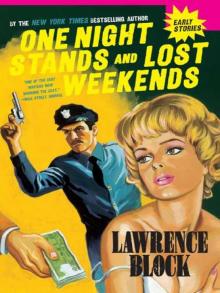 One Night Stands; Lost weekends
One Night Stands; Lost weekends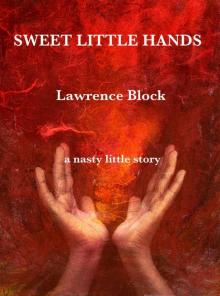 Sweet Little Hands (A Story From the Dark Side)
Sweet Little Hands (A Story From the Dark Side)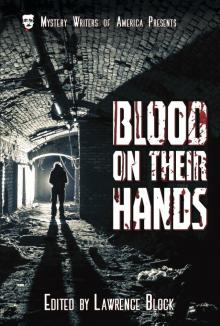 Blood on Their Hands
Blood on Their Hands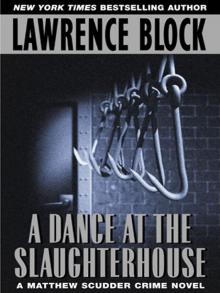 A Dance at the Slaughterhouse
A Dance at the Slaughterhouse Headaches and Bad Dreams (A Story From the Dark Side)
Headaches and Bad Dreams (A Story From the Dark Side) Keller's Therapy
Keller's Therapy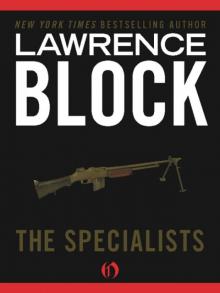 The Specialists
The Specialists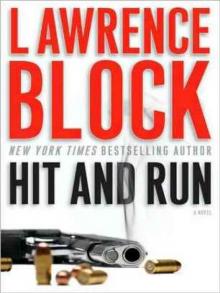 Hit and Run jk-4
Hit and Run jk-4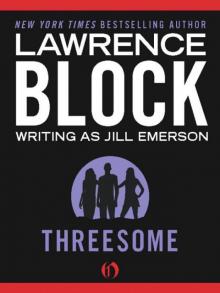 Threesome
Threesome Love at a Tender Age (John Warren Wells on Sexual Behavior)
Love at a Tender Age (John Warren Wells on Sexual Behavior)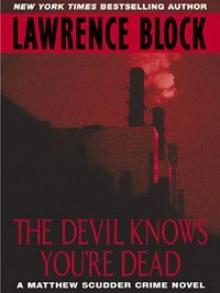 The Devil Knows You're Dead: A MATTHEW SCUDDER CRIME NOVEL
The Devil Knows You're Dead: A MATTHEW SCUDDER CRIME NOVEL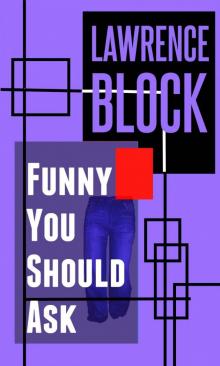 Funny You Should Ask
Funny You Should Ask CH01 - No Score
CH01 - No Score Sex and the Stewardess (John Warren Wells on Sexual Behavior)
Sex and the Stewardess (John Warren Wells on Sexual Behavior)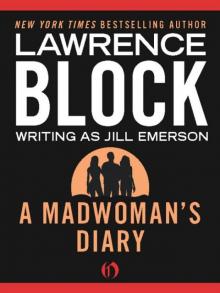 A Madwoman's Diary
A Madwoman's Diary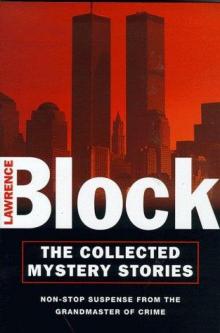 When This Man Dies
When This Man Dies Sinner Man
Sinner Man Such Men Are Dangerous
Such Men Are Dangerous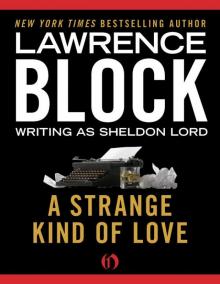 A Strange Kind of Love
A Strange Kind of Love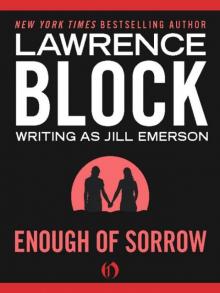 Enough of Sorrow
Enough of Sorrow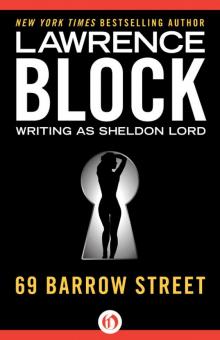 69 Barrow Street
69 Barrow Street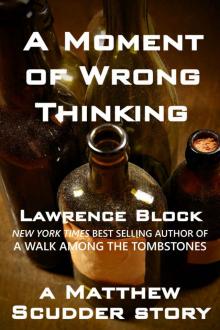 A Moment of Wrong Thinking (Matthew Scudder Mysteries Series Book 9)
A Moment of Wrong Thinking (Matthew Scudder Mysteries Series Book 9) Eight Million Ways to Die ms-5
Eight Million Ways to Die ms-5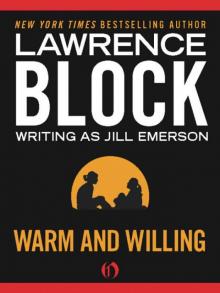 Warm and Willing
Warm and Willing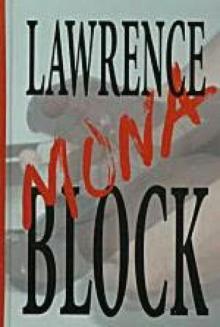 Mona
Mona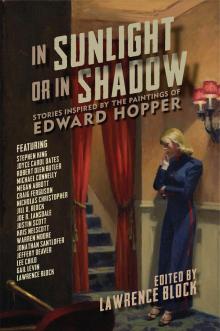 In Sunlight or In Shadow
In Sunlight or In Shadow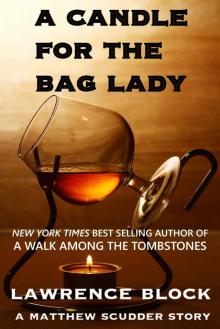 A Candle for the Bag Lady (Matthew Scudder Book 2)
A Candle for the Bag Lady (Matthew Scudder Book 2)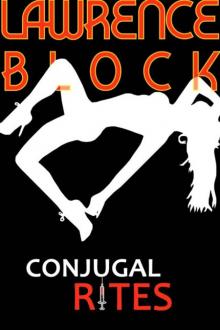 Conjugal Rites (Kit Tolliver #7) (The Kit Tolliver Stories)
Conjugal Rites (Kit Tolliver #7) (The Kit Tolliver Stories) Speaking of Lust - the novella
Speaking of Lust - the novella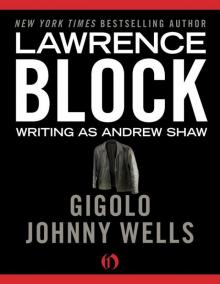 Gigolo Johnny Wells
Gigolo Johnny Wells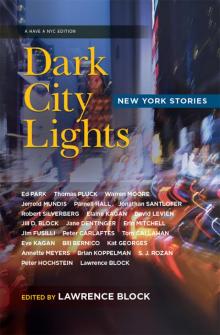 Dark City Lights
Dark City Lights Versatile Ladies: the bisexual option (John Warren Wells on Sexual Behavior)
Versatile Ladies: the bisexual option (John Warren Wells on Sexual Behavior)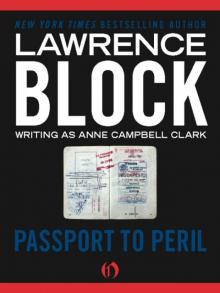 Passport to Peril
Passport to Peril The Taboo Breakers: Shock Troops of the Sexual Revolution (John Warren Wells on Sexual Behavior)
The Taboo Breakers: Shock Troops of the Sexual Revolution (John Warren Wells on Sexual Behavior)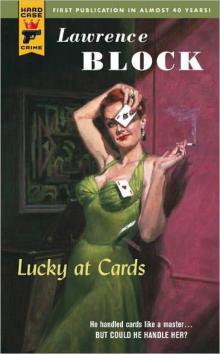 Lucky at Cards hcc-28
Lucky at Cards hcc-28 Campus Tramp
Campus Tramp 3 is Not a Crowd (John Warren Wells on Sexual Behavior)
3 is Not a Crowd (John Warren Wells on Sexual Behavior)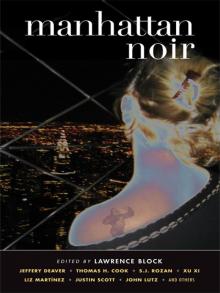 Manhattan Noir
Manhattan Noir The Burglar in the Library
The Burglar in the Library Doing It! - Going Beyond the Sexual Revolution (John Warren Wells on Sexual Behavior Book 13)
Doing It! - Going Beyond the Sexual Revolution (John Warren Wells on Sexual Behavior Book 13)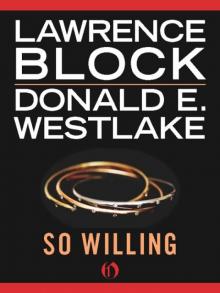 So Willing
So Willing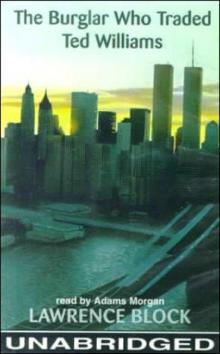 The Burglar Who Traded Ted Williams br-6
The Burglar Who Traded Ted Williams br-6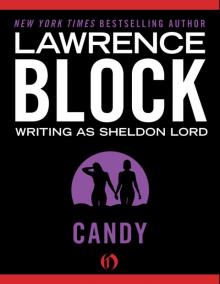 Candy
Candy Sex Without Strings: A Handbook for Consenting Adults (John Warren Wells on Sexual Behavior)
Sex Without Strings: A Handbook for Consenting Adults (John Warren Wells on Sexual Behavior)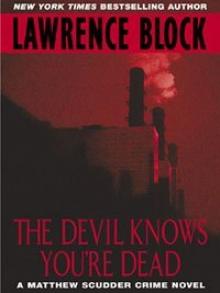 The Devil Knows You're Dead: A MATTHEW SCUDDER CRIME NOVEL (Matthew Scudder Mysteries)
The Devil Knows You're Dead: A MATTHEW SCUDDER CRIME NOVEL (Matthew Scudder Mysteries)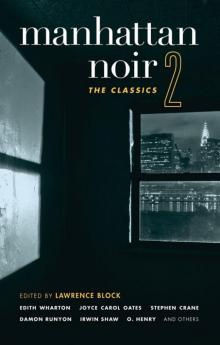 Manhattan Noir 2
Manhattan Noir 2 The Scoreless Thai (aka Two For Tanner)
The Scoreless Thai (aka Two For Tanner)